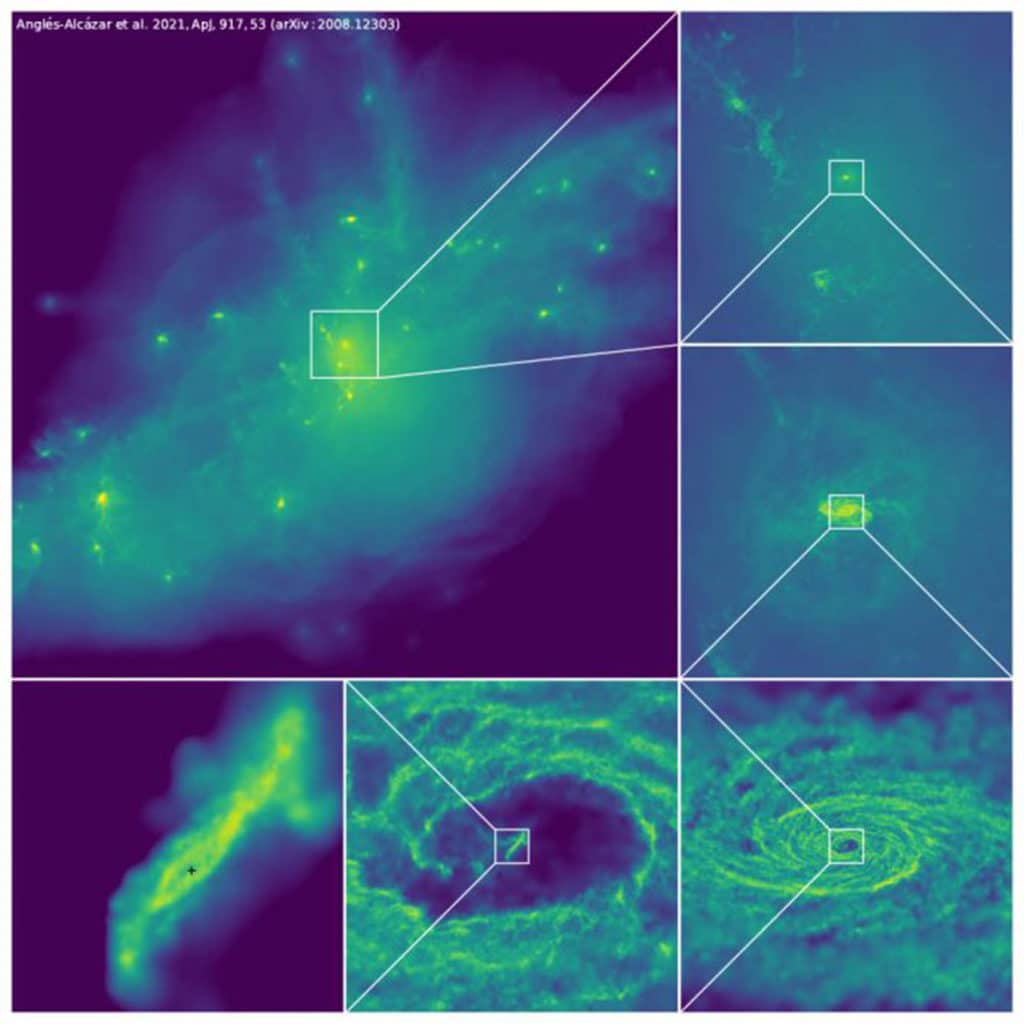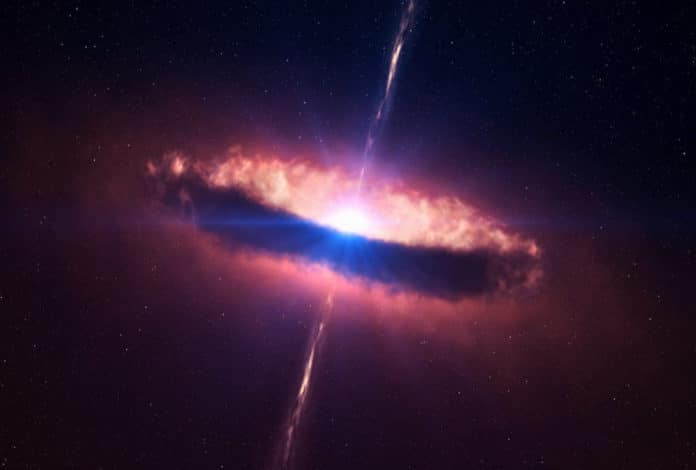Astronomers believe that supermassive black holes lie at the center of virtually all large galaxies. Some black holes shine brightly with a continuous fuel supply, whereas some black holes go dormant for several years. Such dormant black holes rewake with a serendipitous influx of gas.
However, it remains elusive how gas flows across the universe to feed these massive black holes. A new study addresses some of the questions by using new, high-powered simulations.
Scientists at the University of Connecticut created simulations that offer crucial insights into the nature of quasars. The simulations have shown that strong gravitational forces from stars can twist and destabilize the gas across scales. The same force drives sufficient gas influx to power a luminous quasar at the epoch of peak galaxy activity.
Anglés-Alcázar, who is also an Associate Research Scientist at the Flatiron Institute Center for Computational Astrophysics, says, “a challenge in answering these questions has been creating models powerful enough to account for the numerous forces and factors that play into the process. Previous works have looked either at very large scales or the very smallest of scales, but it has been a challenge to study the full range of scales connected simultaneously.”
“Galaxy formation starts with a halo of dark matter that dominates the mass and gravitational potential in the area and begins pulling in gas from its surroundings. Stars form from the dense gas, but some of it must reach the galaxy’s center to feed the black hole. How does all that gas get there? For some black holes, this involves huge quantities of gas, the equivalent of ten times the mass of the sun or more swallowed in just one year.”

“When supermassive black holes are growing very fast, we refer to them as quasars. They can have a mass well into one billion times the sun’s mass and can outshine everything else in the galaxy. How quasars look depends on how much gas they add per unit of time. How do we manage to get so much gas down to the center of the galaxy and close enough that the black hole can grab it and grow from there?”
“Our simulations incorporate many of the key physical processes, for example, the hydrodynamics of gas and how it evolves under the influence of pressure forces, gravity, and feedback from massive stars. Powerful events such as supernovae inject much energy into the surrounding medium, which influences how the galaxy evolves. Hence, we need to incorporate all of these details and physical processes to capture an accurate picture.”
“Building on previous work from the FIRE (“Feedback In Realistic Environments”) project, the new technique highlights the paper that greatly increases model resolution and allows for following the gas as it flows across the galaxy with more than a thousand times better resolution than previously possible.”
“Other models can tell you many details about what’s happening very close to the black hole, but they don’t contain information about what the rest of the galaxy is doing, or even less, what the environment around the galaxy is doing. It turns out, it is very important to connect all of these processes at the same time, this is where this new study comes in.”
“The computing power is similarly massive, with hundreds of central processing units (CPUs) running in parallel that could have easily taken the length of millions of CPU hours.”
“This is the first time that we have been able to create a simulation that can capture the full range of scales in a single model and where we can watch how gas is flowing from very large scales down to the very center of the massive galaxy that we are focusing on.”
“For future studies of large statistical populations of galaxies and massive black holes, we need to understand the full picture and the dominant physical mechanisms for as many different conditions as possible.”
“That is something we are excited about. This is just the beginning of exploring all of these different processes that explain how black holes can form and grow under different regimes.”
Journal Reference:
- Daniel Anglés-Alcázar et al., Cosmological Simulations of Quasar Fueling to Subparsec Scales Using Lagrangian Hyper-refinement, The Astrophysical Journal (2021). DOI: 10.3847/1538-4357/ac09e8
